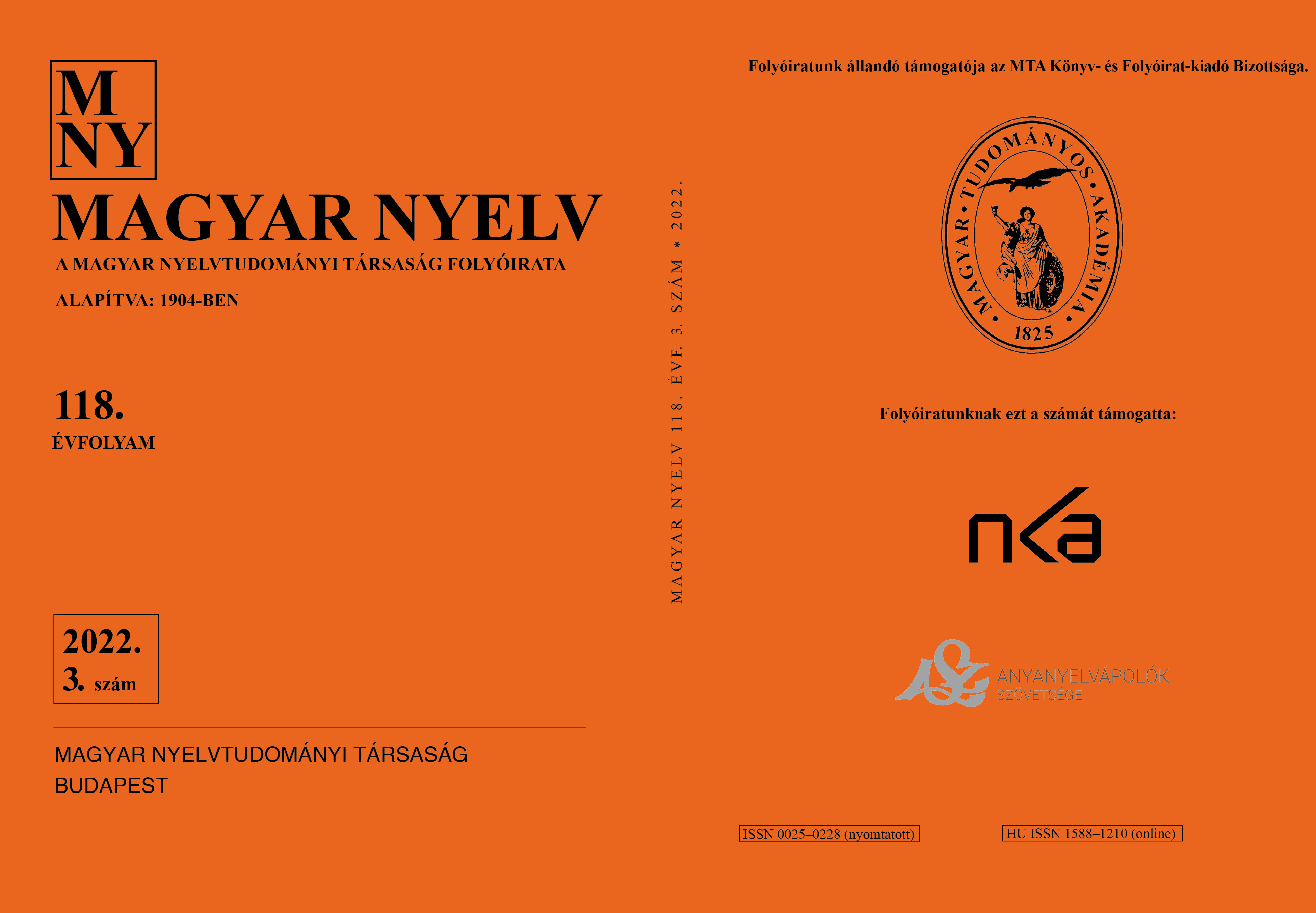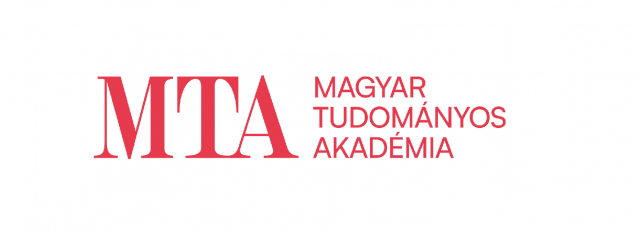Adalékok a való szó történeti vizsgálatához
DOI:
https://doi.org/10.18349/MagyarNyelv.2022.3.301Kulcsszavak:
szófajtörténet, melléknévi igenév, segédszó, modalitás, középmagyar kor, korpusznyelvészetAbsztrakt
Jelen tanulmány célja, hogy bemutassa a határon túli magyar nyelvváltozatok és a nyelvi variativitás összefüggéseit. A munka elméleti részében a szerzők áttekintik a szlovákiai és romániai magyar nyelvváltozatok alaki kölcsönszavait, hiperkorrekt alakjait, a közvetlen kölcsönszavak alakváltozatait és a visszakölcsönzött lexémákat. A dolgozat gyakorlati része olyan szlovákiai és romániai nyelvi példákat mutat be és elemez, amelyek bekerültek A magyar értelmező kéziszótár átdolgozott kiadásába (ÉKsz.2), az Osiris Idegen szavak szótárába, valamint a Termini Kutatóhálózat online szótárába.
##submission.downloads##
Megjelent
Folyóiratszám
Rovat
License
Copyright (c) 2022 Margit Kiss, Mira Roskó, Eszter Szlávich

This work is licensed under a Creative Commons Attribution-NonCommercial-NoDerivatives 4.0 International License.
A periodika Open Access hozzáférésű (Gyémánt). A dokumentumok elektronikus formában szabadon elmenthetők, másolhatók; változtatások nélkül, a forrásra való hivatkozással használhatók. Az alkalmazás kereskedelmi célokat nem szolgálhat. Bármilyen terjesztési és felhasználási forma esetében az 1999. évi LXXVI. szerzői jogról szóló törvény és az ahhoz kapcsolódó jogszabályok az irányadók. Elektronikus változatára a CC BY-NC-ND (Creative Commons – Attribution-NonCommercial-NoDerivatives) licenc feltételei érvényesek.
A folyóirat a szerzők számára időbeli korlátozás nélkül és díjmentesen engedélyezi, hogy kézirataiknak a szerkesztőség által elfogadott, akár a lektori javításokat is tartalmazó, de nem végleges (ún. pre-print) változatait közzétegyék: e-mailen, a szerző vagy intézménye honlapján, illetve a szerző intézményének, egyetemének zárt vagy korlátozás nélkül elérhető repozitóriumában, illetőleg egyéb non-profit szervereken. Amikor a szerző ily módon terjeszti művét, figyelmeztetnie kell olvasóit, hogy a szóban forgó kézirat nem a mű végső, kiadott változata. Ha a cikk végső változata már megjelent nyomtatott, illetve online formában, mindenképpen javasolt és engedélyezett a szerzőnek ezen (post-print) változatot használnia. Ebben az esetben meg kell adnia a folyóiratbeli megjelenés pontos helyét, adatait is. A szerző a közlemény szerzői jogait megtartja, esetleges másodközlés esetén azonban a cikk első megjelenésének bibliográfiai adatait is közölnie kell.




